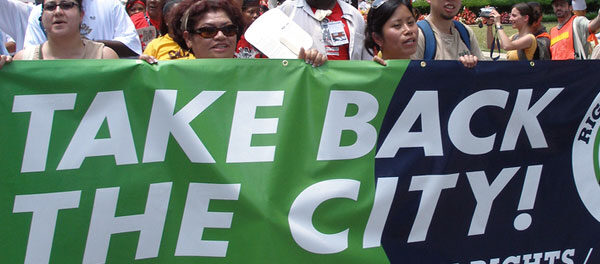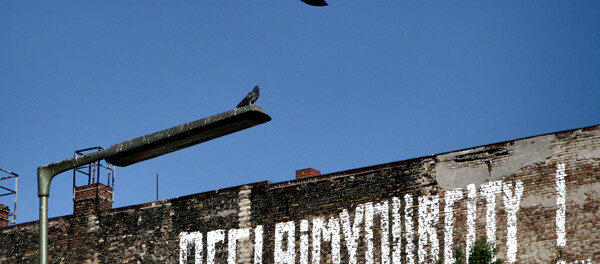This post is a contribution to Blog Action Day 2013 in which bloggers around the world reflect on this year’s theme, Human Rights.
Over the last few years there have been many protests and social movements under the ‘Right to the city’ slogan, from residents of public housing projects in New Orleans wishing to reclaim their old neighborhoods to Berliners fighting against the demolition of the last remaining part of the Berlin wall in order to build luxury apartments, or in Rio de Janeiro, the struggles of residents resisting eviction in the lead up to next year’s World Cup and the 2016 Olympics. These issues are all concerned with the Right to the city. But what does this phrase actually mean? What is this ‘right’? Are all entitled to it? Why is it important?
The origin of the idea
The concept was first developed by French sociologist Henri Lefebvre in his 1968 book Le droit à la ville. He defines the Right to the city as a right of no exclusion of urban society from qualities and benefits of urban life. In the text Lefebvre writes about socio-economic segregation and its phenomenon of estrangement. He refers to the “tragedy of the banlieusards,” people forced into residential ghettos far from the city center. Against this backdrop he demands the Right to the city as a collective reclamation of the urban space by marginalized groups living in the border districts of the city. In the 1990s Lefebvres’ idea was taken up in the fields of geography and urban planning, and became the slogan for many social movements.
Today, the market-centric city is the focus, including new methods of production and new forms of segregation and exclusion. There is an absence of participation in shaping the city for those who have been excluded from economic development, for those who have been displaced through gentrification or for those who are suffering from exclusionary immigration policies. Social theorists David Harvey and Margit Mayer outline the demand for the Right to the city as a kind of request for all the people who live in the city.
According to Harvey: “The Right to the city is far more than the individual liberty to access urban resources: it is a right to change ourselves by changing the city. It is, moreover, a common rather than an individual right since this transformation inevitably depends upon the exercise of a collective power to reshape the processes of urbanization. The freedom to make and remake our cities and ourselves is, I want to argue, one of the most precious yet most neglected of our human rights.”
What does it mean?
The Right to the city is not meant to be understood as an individual legal right. It is often seen as a social utopia and collective claim inspiring ideas and suggestions for social movements and a better world. It is a slogan for movements worldwide which fight against the manifestations of many modern cities in which public processes and utilities have been privatized and where development is driven primarily if not solely by corporations and markets. Gihan Perera, co-founder of the Right To The City Alliance, describes it as:
The Right to the city is about power for the working class, for people of color, for immigrants, youth and for all others committed to a truly democratic society. A society where all city inhabitants have the power to shape the decisions and the conditions that affect our lives. We fight for concrete improvements that result in stronger communities and a better state of being for our friends, families, and for our children’s futures. Our organizations take on campaigns to win housing, education, transportation, and jobs. We struggle for community safety and security, neighborhood sustainability, environmental justice, and the right to culture, celebration, rest, and public space. These are the material results of our fights to take back the city. These are the goals that the Right to the city frames.
The Right to the City in Rio de Janeiro
In Brazil, the 2001 City Statute wrote the Right to the city into federal law. However, in the context of the rapid transformations currently underway in Rio in preparation for next year’s World Cup and the 2016 Olympics and the lack of public participation in these transformations, the collective Right to the city is seriously compromised. Especially affected are favela residents, with tens of thousands facing the threat of eviction, undergoing eviction or having already been evicted from their homes. In protests and debates across the city, Rio residents are questioning to what extent their city is being modeled without them and for others.


